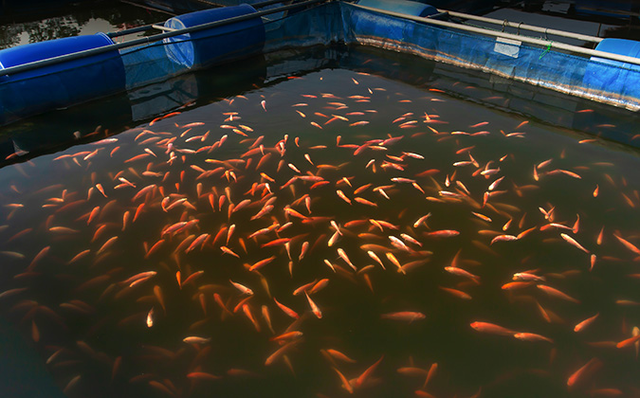
New knowledge sheds light on bacterial threats to Asian tilapia aquaculture
A growing understanding of bacterial pathogens is highlighting the challenge Asian tilapia producers face, but good health-management practices on fish farms and new diagnostic technologies can help, says an academic expert.
Speaking at a Food and Agriculture Organization of the United Nations event on tilapia health in Asia, Olga Haenen, PhD, head of National Reference Laboratory for Fish, Shellfish and Crustacean Diseases at Wageningen Bioveterinary Research, said that recent years have seen an emergence of new diseases.
Industry faces diverse pathogens
Edwardsiellosis, caused by Edwardsiella ictaluri and E. tarda, is one such new threat to fish health in the industry. The disease was first diagnosed in the Western Hemisphere in 2012 and has since arrived in Southeast Asia, recently identified in Vietnam.
“This is a really important disease…it’s causing a lot of problems,” she said. “It is emerging, but already heightened levels of antibiotic resistance are reported.”
Although sometimes external signs are not clear, opacity in fish corneas and, ultimately, total loss of eye function can be seen, as well as pallor of the gills. Considerable internal hemorrhaging is common in severe cases. Care needs to be taken with diagnosis to distinguish the disease from francisellosis and mycobacteriosis, she noted.
Aeromonas schubertii is another emerging pathogen, which causes multi-organ necrosis. The first case was observed in 2018 in China, among wild Nile tilapia in brackish water, Haenen explained, although it has yet to spread to tilapia in other countries.
Damage to the surface of the fish body and the digestive tract could be the roots for infection, she suggested, as research has showed that intramuscular and intraperitoneal injection causes disease and mortalities, whereas challenges by immersion or oral administration do not.
“It’s hard to put a finger on this disease as yet,” she added.
Other emerging bacterial pathogens of note that affect tilapia include Lactococcus garvieae and Aerococcus viridans, although she stressed that little is known about their transmission routes and control or prevention options to date.
Known threats require heightened attention
Well-established disease-causing bacteria also need to be closely monitored, she said, underlining the fact that Aeromonas are becoming more tolerant of water salt concentration.
“This is a development which is able to cause problems in brackish and saltwater environments,” she explained.
Francisellosis, caused by the bacterium Francisella orientalis, can cause high mortalities at the temperatures found in Asian aquaculture, she continued, noting that although antibiotics have generally been used to control the disease to date, a recent study exploring the use of a killed vaccine saw 76% survival.
Among a number of Vibrio bacteria affecting tilapia aquaculture, Haenen highlighted V. vulnificus as a particularly serious species.
An emerging diagnostic technology called MALDI-TOF has proved useful for Haenen’s team in identifying the specific pathogens involved in cases of vibriosis, as well as other bacterial diseases.
“The advantage is that the same day as you have the colony you have the result with the name of the bacterium, and you don’t have to incubate it for 2 days or more.”
Overcoming antibiotic challenge
Antimicrobial resistance (AMR) is a major issue affecting the treatment of bacterial disease, with antibiotics used too readily in Asian production and without the necessary antibiogram to determine the susceptibility of pathogens to available drugs, Haenen said. She stressed that this needs to change across the board.
Good husbandry and biosecurity are important in the fight to eliminate AMR, she added, with vaccination and the use of specific-pathogen-free fish also important components of better overall practices.






